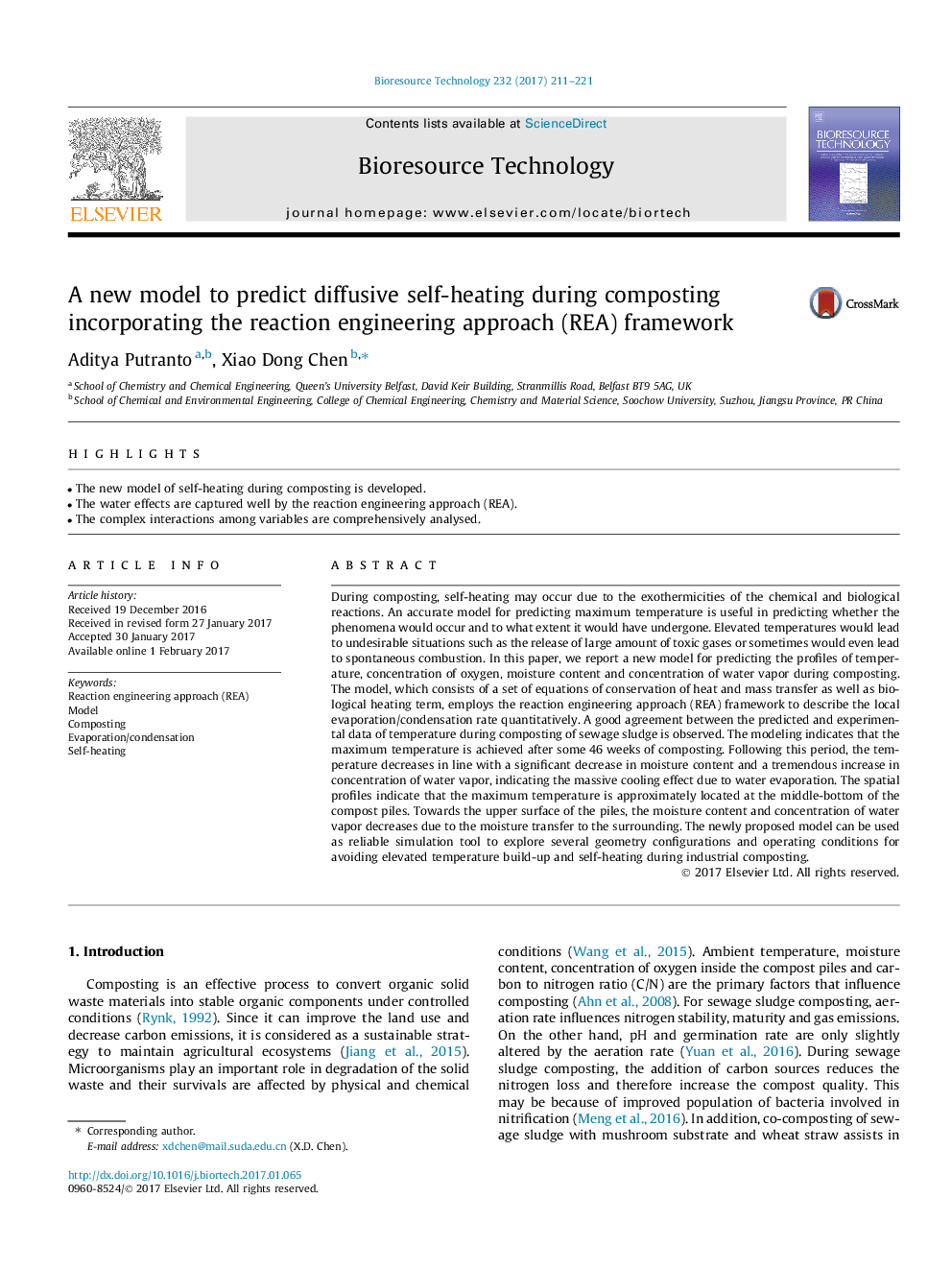| کد مقاله | کد نشریه | سال انتشار | مقاله انگلیسی | نسخه تمام متن |
|---|---|---|---|---|
| 4997569 | 1459911 | 2017 | 11 صفحه PDF | دانلود رایگان |

- The new model of self-heating during composting is developed.
- The water effects are captured well by the reaction engineering approach (REA).
- The complex interactions among variables are comprehensively analysed.
During composting, self-heating may occur due to the exothermicities of the chemical and biological reactions. An accurate model for predicting maximum temperature is useful in predicting whether the phenomena would occur and to what extent it would have undergone. Elevated temperatures would lead to undesirable situations such as the release of large amount of toxic gases or sometimes would even lead to spontaneous combustion. In this paper, we report a new model for predicting the profiles of temperature, concentration of oxygen, moisture content and concentration of water vapor during composting. The model, which consists of a set of equations of conservation of heat and mass transfer as well as biological heating term, employs the reaction engineering approach (REA) framework to describe the local evaporation/condensation rate quantitatively. A good agreement between the predicted and experimental data of temperature during composting of sewage sludge is observed. The modeling indicates that the maximum temperature is achieved after some 46Â weeks of composting. Following this period, the temperature decreases in line with a significant decrease in moisture content and a tremendous increase in concentration of water vapor, indicating the massive cooling effect due to water evaporation. The spatial profiles indicate that the maximum temperature is approximately located at the middle-bottom of the compost piles. Towards the upper surface of the piles, the moisture content and concentration of water vapor decreases due to the moisture transfer to the surrounding. The newly proposed model can be used as reliable simulation tool to explore several geometry configurations and operating conditions for avoiding elevated temperature build-up and self-heating during industrial composting.
Journal: Bioresource Technology - Volume 232, May 2017, Pages 211-221